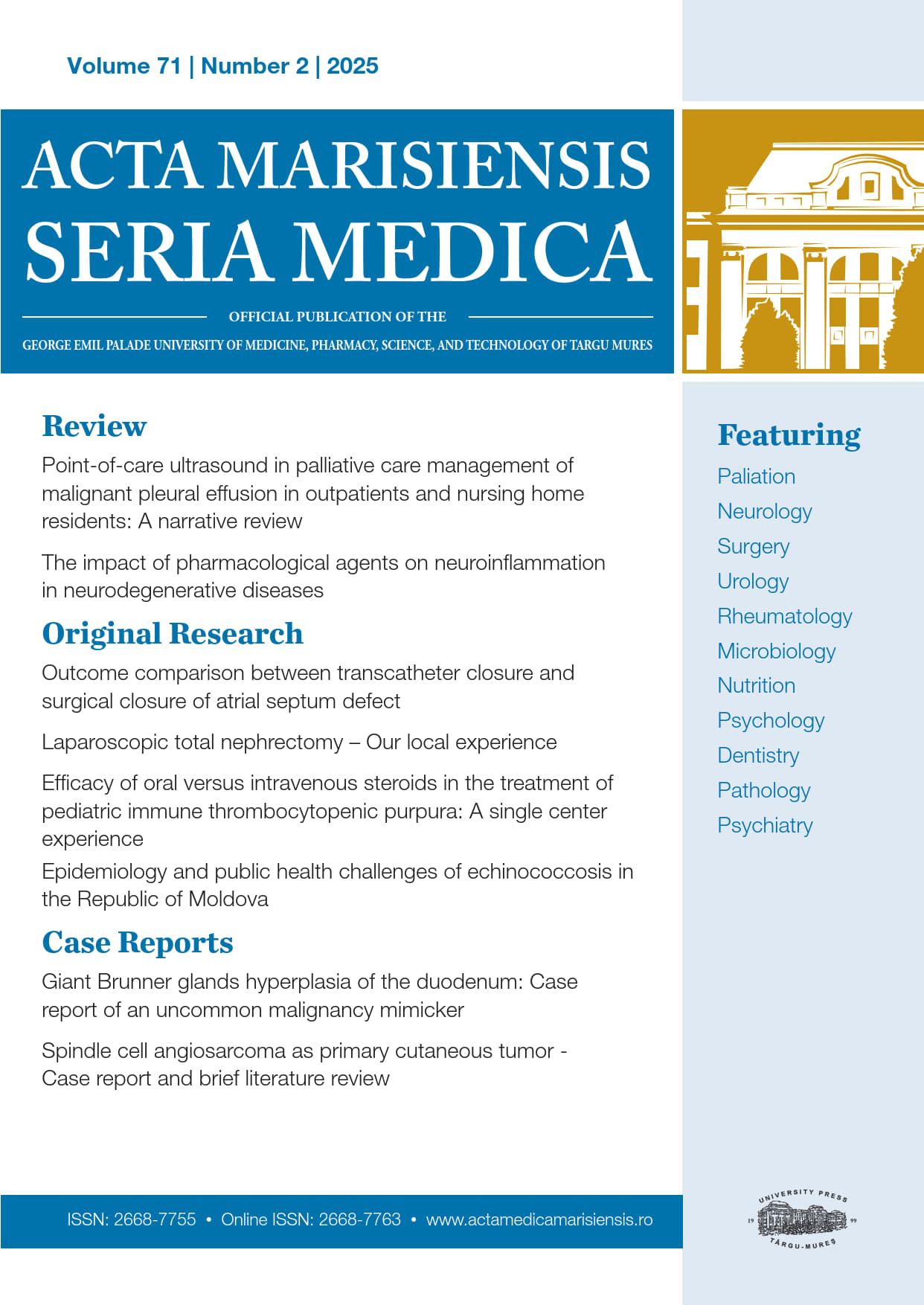Giant Brunner glands hyperplasia of the duodenum: case report of an uncommon malignancy mimicker
Abstract
Introduction: Brunner’s glands hyperplasia (BGH) is an uncommon benign proliferative lesion found in the proximal duodenum. It is typically discovered incidentally during surgery or endoscopic examinations, and it can often be mistaken for a malignant process.
Case presentation: We report the case of a 59 years-old man who presented in the surgical department with a 5-days history of upper gastrointestinal tract symptoms associated with mild increase in serum amylase level. An esophagogastroduodenoscopy was performed, which showed a large infiltrating-type mass located in the proximal duodenum rising the suspicion for a pancreatic head tumor with duodenal wall involvement. Consequently, Whipple procedure was conducted. The resection specimen was further sent and processed in the Pathology department of Mureș County Clinical Hospital. On macroscopy a large polypoid-sessile mass located in the proximal duodenum was described, while the adjacent pancreatic tissue exhibited areas of extensive necrosis and hemorrhage. Microscopic evaluation revealed a benign proliferation composed of closely packed clusters of Brunner’s glands separated by thin fibrous septa located in the duodenal submucosa, with no evidence of atypia or mitotic figures.
Conclusions: Large diffuse BGH is a rare benign condition that poses diagnostic challenges due to its potential to mimic malignant processes. Given the indolent character of the lesion, it is crucial to consider BGH as part of the differential diagnosis in routine pathological activity when evaluating lesions of the duodeno-pancreatic region.
Copyright (c) 2025 Georgian Nicolae Radu

This work is licensed under a Creative Commons Attribution 4.0 International License.









